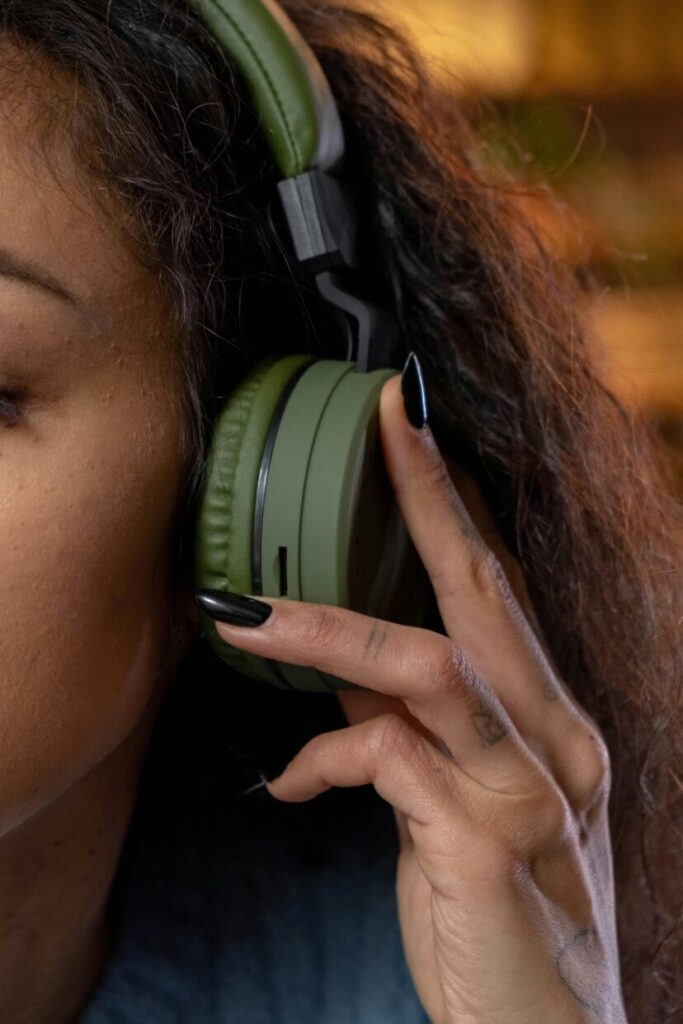In our bustling, often overwhelming world, finding moments of peace and focus can feel like a luxury. For many, especially those with sensory sensitivities, the constant barrage of sounds can be genuinely debilitating. Enter sensory headphones – a game-changer designed not just for listening, but for experiencing sound in a whole new, manageable way.
So, what exactly are these marvels, and how do they differ from your everyday earbuds? Let’s dive in.
What are Sensory Headphones and How are They Different from Normal Ones?
At a glance, sensory headphones might look like regular over-ear headphones. But their purpose and design principles set them distinctly apart.
Normal Headphones:
- Primary Purpose: To deliver audio (music, podcasts, calls) to your ears, clearly and accurately.
- Focus: Sound fidelity, comfort for extended listening, portability.
- Design: Often lightweight, with varying degrees of sound isolation, but their main job isn’t to block external noise, it’s to enhance the audio you want to hear.
Sensory Headphones (or Noise-Reducing/Cancelling Headphones):
- Primary Purpose: To manage external sound input, either by significantly reducing it or completely blocking it, thereby creating a calmer auditory environment.
- Focus: Noise attenuation, comfort for long-term wear, durability.
- Design: Often feature thicker earcups, denser materials, and advanced technology specifically engineered to reduce ambient noise. Some may also prioritize comfort for sensitive users.
The core difference lies in their intent. Normal headphones addsound; sensory headphones primarily subtract or control it.
How Do They Work?
Sensory headphones employ various technologies to achieve their noise-reducing magic:
- Passive Noise Isolation (Noise Reduction):
- This is the simplest form, often found in earmuffs or basic noise-reducing headphones.
- How it works: They create a physical barrier between your ears and the outside world. Thick, dense materials (like foam, silicone, or high-density plastic) in the earcups physically block sound waves from reaching your eardrums. A snug fit is crucial to prevent sound leakage. Think of it like putting your hands over your ears, but much more effective.
- Active Noise Cancellation (ANC):
- This is a more advanced technology that requires power (batteries).
- How it works: Tiny microphones on the outside of the headphones pick up ambient low-frequency noises (like engine hums, air conditioning, distant traffic). An internal chip then generates an “anti-noise” sound wave that is precisely 180 degrees out of phase with the incoming noise. When these two sound waves meet, they effectively cancel each other out, reducing or eliminating the unwanted sound before it reaches your ear. ANC is particularly effective against continuous, low-frequency sounds.
- Combination:
- Many high-quality sensory headphones use a combination of both passive isolation and active noise cancellation for maximum effectiveness, blocking a wider range of frequencies.
Why We Love Them & Their Sensory Benefits
The love for sensory headphones stems from the profound benefits they offer:
- Reduce Overstimulation: For those easily overwhelmed by noise, they provide an immediate sanctuary, reducing sensory overload in busy environments (supermarkets, classrooms, public transport).
- Improve Focus and Concentration:By blocking out distractions, they allow for greater focus on tasks, studying, reading, or even just quiet reflection.
- Support Emotional Regulation: A calmer auditory environment can lead to a calmer nervous system, helping to reduce anxiety, stress, and meltdowns, especially for children.
- Promote Better Sleep: Blocking out snoring, street noise, or noisy neighbors can significantly improve sleep quality.
- Create a “Personal Bubble”: They offer a sense of control and safety, allowing individuals to retreat into their own space amidst chaos.
- Protect Hearing: In excessively loud environments (concerts, construction sites), they can prevent hearing damage.
- Enhance Learning: For students easily distracted, they can transform a noisy classroom or library into a productive learning space.
Which Kind of Sensory Seekers (and Avoiders) Would Like Them?
While often associated with sensory “avoiders,” sensory headphones can benefit a surprising range of individuals:
- Sensory Avoiders (Noise Sensitivity):
- Autistic Individuals: Many experience auditory hypersensitivity, finding everyday sounds painful or overwhelming.
- Individuals with ADHD: Noise can be a huge distraction, making focus extremely difficult.
- People with Sensory Processing Disorder (SPD):Both hyper- and hypo-sensitivity to sound can be present, but noise reduction is often a key need.
- Those with Anxiety Disorders:Loud, unpredictable noises can trigger or exacerbate anxiety.
- Individuals with Misophonia:Specific sounds can trigger intense negative emotional or physiological responses.
- People Prone to Migraines:Loud noise can be a trigger or worsen symptoms.
- Sensory Seekers (in a nuanced way):
- While noise-reduction primarily helps avoiders, some seekers might use these headphones with specific calming or stimulating audio (e.g., white noise, binaural beats, specific music) to help organize their sensory input, or to create a quiet space from which to better seek other sensory input.
- Some specialized “sensory headphones” might even incorporate tactile vibration or bone conduction for those seeking specific vibratory input.
Our Favorite Sensory Headphones
The LEVN Hybrid Active Noise Cancelling Headphones is our top choice, primarily due to their exceptional active noise cancellation, which effectively blocks 99% of ambient sound. For moments requiring situational awareness and safety, they also feature called transparency mode which can let important sounds through. These are very comfortable headphones, though they may prove too large for very young children.
These headphones boast 70 hours of playtime on a single charge and has a practical wired connection option for continuous use. These are top rated on Amazon being consistently praised for their reliable build, seamless connectivity, and value.
Similar Things People Might Like
If sensory headphones resonate with you, you might also find comfort and benefit from these related sensory tools:
- Weighted Blankets/Vests: Provide deep pressure input, which can be incredibly calming for the nervous system.
- Fidget Toys: Offer a discreet way to manage restless energy and improve focus.
- Light-Filtering Glasses/Sunglasses: Help manage visual overstimulation, especially for light-sensitive individuals.
- Sound Machines/White Noise Apps:Provide a consistent, soothing background sound (like white noise, pink noise, or nature sounds) to mask distracting noises or create a calming ambiance.
- Earplugs (Discreet): Simple, portable, and less noticeable than headphones, ideal for mild noise sensitivity or specific situations.
- Sensory Swings: Provide vestibular and proprioceptive input for regulation.
Sensory headphones are more than just a gadget; they’re a tool for empowerment, enabling individuals to navigate a noisy world with greater comfort, focus, and control. Whether you’re seeking profound quiet or a calmer space for concentration, finding the right pair can truly transform your sensory experience.


